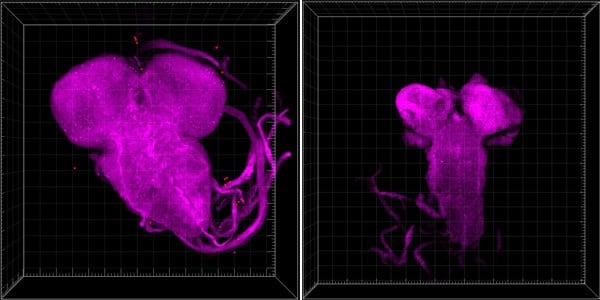May the force not be with you: SickKids scientists find brain tumour cells hijack force-activated ion channels to promote tumour stiffening and growth
Summary:
Despite the significance of tissue mechanics in cancer, the way solid tumour cells sense and respond to their physical environment is largely unknown. Researchers at The Hospital for Sick Children (SickKids) recently found that in glioma cells, ion channels can promote cancerous growth.
TORONTO – How solid tumours grow and change form is crucial for scientists and clinicians to understand. Tumour tissue stiffening indicates malignant growth and often restricts the delivery of diagnostic and therapeutic agents. Despite the significance of tissue mechanics in cancer, the way solid tumour cells sense and respond to their physical environment is largely unknown.
A recent study from The Hospital for Sick Children (SickKids) published today, Oct. 18, in the online edition of Neuron has found that tumour cells in gliomas, the most common form of brain tumour, hijack force-activated ion channels to fuel malignant tumour growth.
Ion channels are proteins that sit on the surface of cells. They control cellular functions by permitting electrically charged molecules, called ions, to pass into or out of a cell. The PIEZO class of ion channels control ion movements by opening in response to physical force. In non-cancerous cells, PIEZO channels regulate sensory functions such as touch and proprioception, which involves knowing where our body parts are when our eyes are closed.
A laboratory team led by Dr. Xi Huang, Scientist in the Developmental and Stem Cell Biology Program at SickKids, found that in glioma cells, PIEZO1 (in humans) and Piezo (in fruit flies) can promote tumour tissue stiffening and cancerous growth.
“Our discoveries are novel because we identified PIEZO1 as a long sought-after molecular sensor that converts physical force into electrical and cellular signals, eventually resulting in the stiffening of tumours,” says Dr. Huang who is also an Assistant Professor in the Department of Molecular Genetics at the University of Toronto.

In the most aggressive gliomas in humans, there are more PIEZO1 channels than usual and the amount of channels predicts patient survival. The physical force exerted on the glioma cells causes PIEZO1 channels to open, promoting tumour growth and aggravating tissue stiffening. In turn, as the glioma becomes stiffer, the number of PIEZO1 channels in the glioma cells increases, creating a vicious cycle where the tumour becomes increasingly aggressive.
The research team proposes that targeting PIEZO1 is key to break this vicious cycle and is an effective approach to treat gliomas by restoring the normal (and softer) physical characteristics of the brain.
“We envision our discoveries to be broadly applicable as we found that PIEZO1 is overexpressed in a number of human solid tumour types. PIEZO1 may be a shared force sensor and regulator of tissue stiffening in various cancers,” says Dr. Huang. “Our findings provide a strong impetus for the research community to look beyond normal cells and investigate PIEZO1 function in cancer.”
The next steps for the research team involve developing new PIEZO1-blocking therapeutic agents to treat glioma by addressing the tumour’s abnormal tissue mechanics.
This study was supported by the Arthur and Sonia Labatt Brain Tumour Research Centre, Garron Family Cancer Centre, b.r.a.i.n.child, Meagan’s Walk, Natural Sciences and Engineering Research Council (NSERC) Discovery Grant, Ontario Institute for Cancer Research (OICR) Brain Cancer Translational Research Initiative, Canadian Institutes of Health Research (CIHR) Project Grants and the SickKids Foundation.
It is an example of how SickKids is making Ontario Healthier, Wealthier and Smarter. (www.healthierwealthiersmarter.ca).
About The Hospital for Sick Children (SickKids)
The Hospital for Sick Children (SickKids) is recognized as one of the world’s foremost paediatric health-care institutions and is Canada’s leading centre dedicated to advancing children’s health through the integration of patient care, research and education. Founded in 1875 and affiliated with the University of Toronto, SickKids is one of Canada’s most research-intensive hospitals and has generated discoveries that have helped children globally. Its mission is to provide the best in complex and specialized family-centred care; pioneer scientific and clinical advancements; share expertise; foster an academic environment that nurtures health-care professionals; and champion an accessible, comprehensive and sustainable child health system. SickKids is a founding member of Kids Health Alliance, a network of partners working to create a high quality, consistent and coordinated approach to pediatric health care that is centred around children, youth and their families. SickKids is proud of its vision for Healthier Children. A Better World.
Media contact
Jessamine Luck
The Hospital for Sick Children (SickKids)
416-813-7654 ext. 201436
jessamine.luck@sickkids.ca

